Options for Sea Level Rise Adaptation on West Cliff Drive
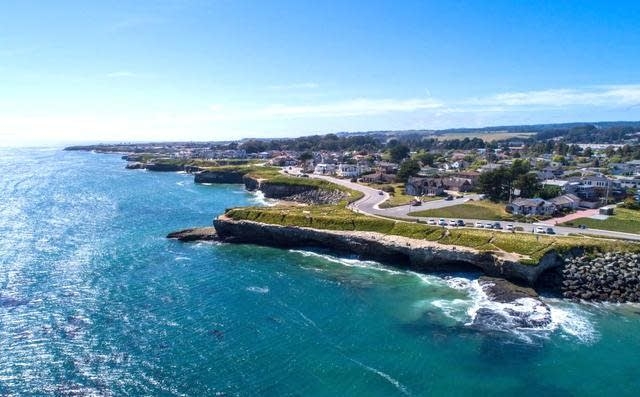
From the summer of 2019 through the publication of the final October 2020 report, “Options for Sea Level Rise Adaptation on West Cliff Drive, “ Dr. Charles Colgan, Director of Research at the Center for the Blue Economy, and a host of partners were quite busy.
Armed with Galaxy tablet and survey questions, Anthony Castelletto, Research Associate at the Center for the Blue Economy, and graduate students from both the Middlebury Institute and U.C. Santa Cruz, spoke with surfers, residents and non-residents with the goal to address the question: What is the baseline value of recreation for iconic West Cliff Drive in Santa Cruz?
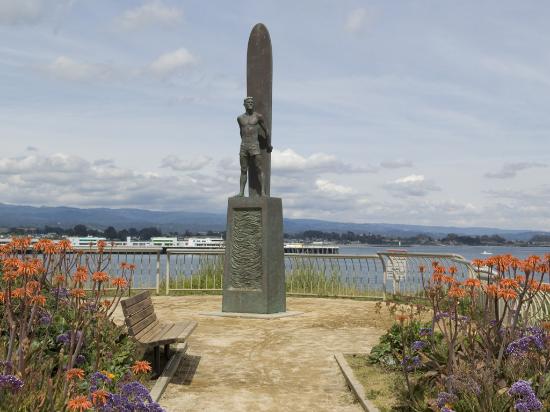
West Cliff Drive in the of City of Santa Cruz, California spans 2.5 miles of ocean views, cliffs and beaches. That stretch is home to an iconic lighthouse, prime surf spots, and is frequented year-round by locals and non-residents alike.
But sea-level rise and storms threaten to undercut the road. West Cliff Drive, like all of the California coastline, is threatened by continuing erosion. Erosion is expected to significantly increase as sea levels rise and storms intensify. It is possible that in the foreseeable future large parts of the walkway and roadway could be lost without action.
There are many challenges for city planners in trying to figure out the best course forward. One challenge to adaptation planning is the uncertainty associated with the rate and elevation of sea level rise at future points of time, critical to the question of what to do and when. What to spend on what strategy for the best return on investment?
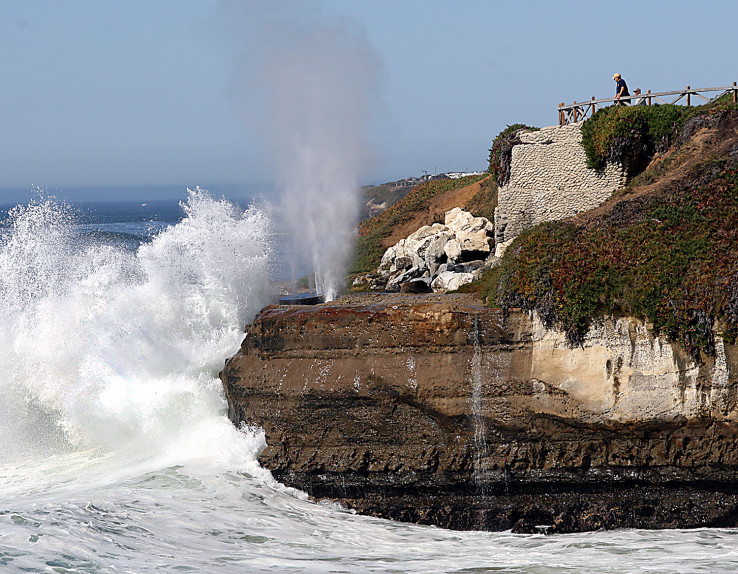
Building on the substantial work of the West Cliff Drive Adaptation and Management Plan project, along with significant community engagement, the Center for the Blue Economy and partners Dr. Dave Revell of Integral Consulting, and Dr. Phil King, Associate Professor of Economics at San Francisco State University dove in to the technical details to create a cost-benefit analysis to give the City of Santa Cruz a clear set of recommendations. It was very collaborative project.
“This is another project in which Center for the Blue Economy is helping communities deal with the uncertain consequences of sea level rise and the effects on key infrastructure like West Cliff Drive. The project was also a collaboration between geologists, engineers, planners, and citizens in Santa Cruz, including a number of students from the University of California at Santa Cruz who did the surveys. ”
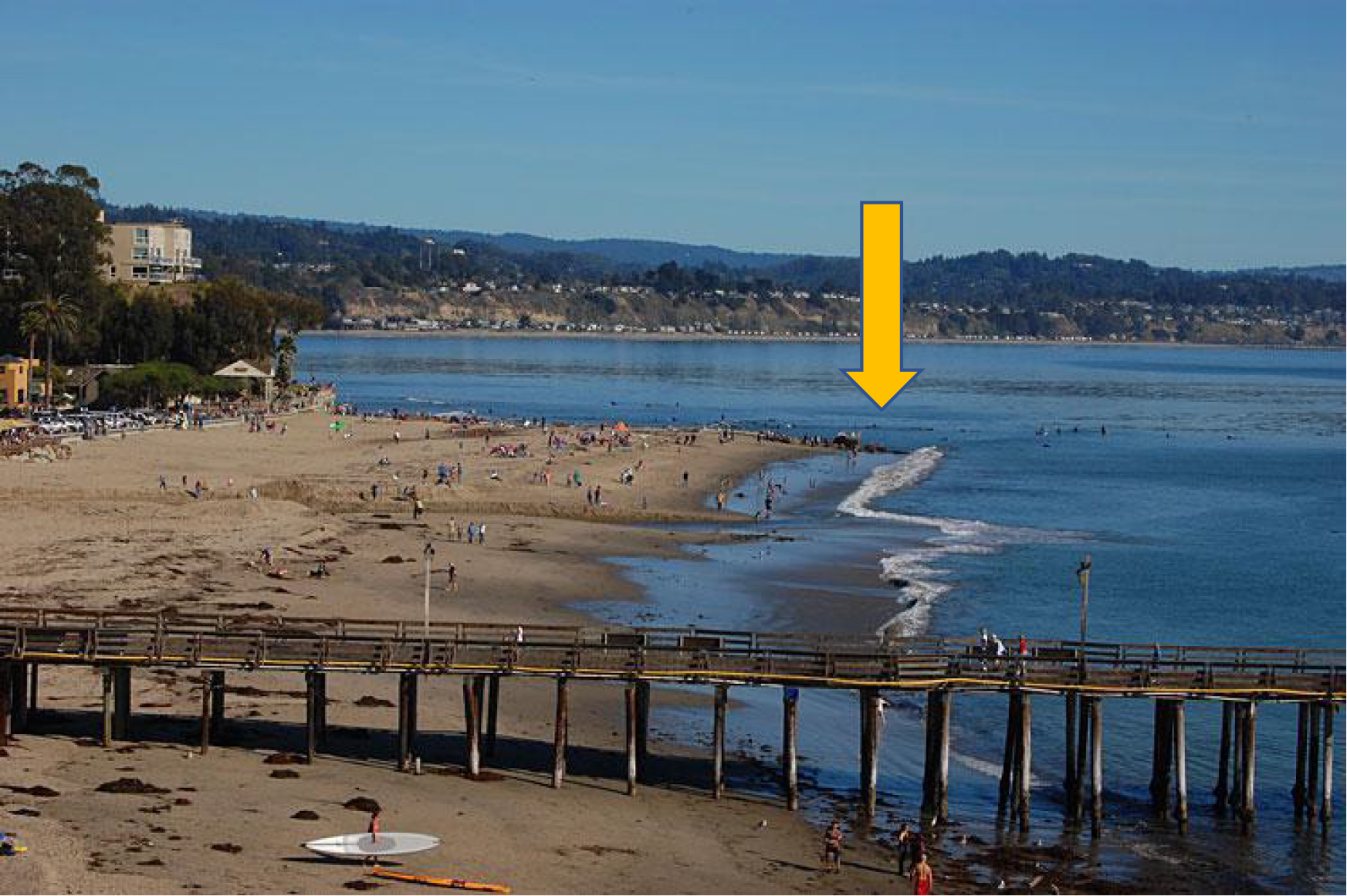
Having established a baseline value for all economic activity along West Cliff Drive, the benefit cost analysis was designed to support a choice between four different adaptation strategies:
- Business as Usual–No actions are taken beyond routine maintenance and irregular emergency repairs
-
Managed Retreat–Existing armoring structures are removed, and natural erosion and shoreline processes restored.
-
Recreation Focused Strategy–A combination of sand management, reduction in coastal armoring footprints and sand retention structures along with structural adaptation in high hazard areas such as sea caves.
-
Protection Focused Strategy–Projects that stabilize the shoreline such as revetments, groins, seawalls, filling of sea caves, and construction of artificial bedrock.
The fundamental question is whether it is economically worthwhile for the City to invest substantial resources in adapting to sea level rise along West Cliff Drive compared with continuing as they have in the past? Economically worthwhile projects have benefits greater than costs, taking into account the differences in timing of spending and receipt of benefits. (This concept is called the net present value—your economics lesson for the day!)
All the factors taken into account, the team used the “Monte Carlo” model, a technique to test many different possible scenarios of sea level rise (will the seas rise .3ft, .88ft, or 1.9ft?). In this analysis, 100,000 different scenarios were examined in every run of the analysis. The underlying sea level rise data is the same as used by the State of California in its various sea level rise planning guidance documents.
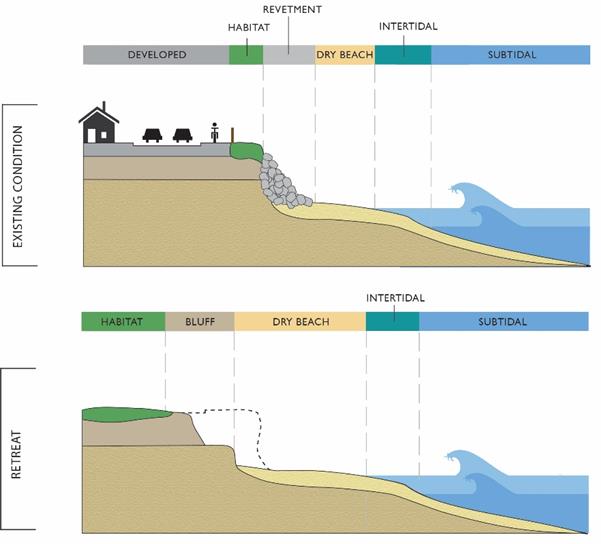
The findings in the report suggest that the more the City invests in the near future, the more will be saved in the future.
- The economically optimal strategy is to combine actions that provide erosion protection to the shoreline with enhancements to surf and shoreline recreational use. This is the recreation-focused strategy, which has the highest net present value in each sea level trigger scenario, as well as by far the strongest probability of a positive net present value. This alternative reduces the footprint of existing armoring and mitigates some of the secondary impacts by implementing a sand management program.
- There is almost no chance that the business as usual approach will yield a positive net present value compared with any of the adaptation options except by comparison with the protection-focused strategy if implemented at the highest sea level rise trigger (1.9 feet) and even then the chances are very small.
- All the investment strategies all have higher positive net present values if investments are made sooner, that is before sea levels have increased by about two feet rather than after sea levels have increased by about two feet. The estimated net present value and the probability of a positive net present value (benefit cost ratio greater than 1) diminish significantly with delay.
- Managed retreat has a positive net present value if undertaken very soon but the values diminish to negative if delayed too long. This finding is a bit unique in the traditional adaptation literature, basically, the sooner managed retreat is implemented, the greater the benefit. Postponing the relatively high costs of removing armoring reduces the present value costs, and delays the large benefits of retreat overcomes that cost reduction.
- The timing of investment decisions to implement adaptation strategies is critical when calculating future net present values. Delaying taking action reduces both the present value of expenditures needed and the future benefits to be received more rapidly, resulting in the reductions in net present values over time. This is a function of discounting future benefits. Implementing adaptation strategies sooner rather than later is also supported by the probability analysis indicating that sea level rise and its impacts could be more rapid in the future rather than the mean estimates.
The overall results indicate that making adaptation investments in the short term associated with the recreation-focused strategy (sand placement at Pyramid Beach, reducing the footprint or placement losses on the beach from existing revetments, using cave fills and soil nail wall projects, and a medium term groin, etc.) have the greatest probability of yielding positive net benefits—in common language—the most bang for the buck.
Just another day (or year) in the life of the research team at the Center for the Blue Economy. You’re welcome City of Santa Cruz.
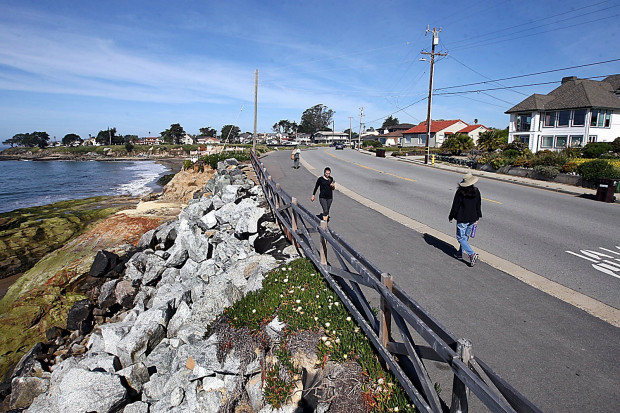
For More Information
Read the full report: Options for Sea Level Rise Adaptation on West Cliff Drive, prepared for the City of Santa Cruz by the Center for the Blue Economy, and Integral Consulting.
